It seems like we’ve entered the era of ADHD epidemics.
As of 2011, one in ten children between 4 and 17 years of age have been diagnosed with attention deficit hyperactivity disorder (ADHD). (1)
More than 5% of school children in Canada have it. As you can see, it’s a disorder that needs to be approached seriously.
Conventional drugs for ADHD produce a number of undesirable side effects, which is why more and more patients are turning to an all natural solution — marijuana.
However, the issue of marijuana and ADHD is still somewhat controversial. Why is that so?
Can you imagine telling someone you are giving your child marijuana, as a part of the ADHD therapy? It freaks some people out…Of course, no one wants our children smoking but there are other ways of consuming medicinal cannabis.
Statistics say that about 50% of ADHD and ADD sufferers use alcohol or drugs to relax. Unfortunately, they usually start using these substances at a very young age.
This is all very expected since the conventional drugs for treating ADHD (Adderall, Ritalin, and Concerta) may cause a number of side effects.
Now, as you probably know, many ADHD patients take marijuana on their own and most of them are very happy with the results. (link)
So, if the patients swear that they find relief in medical cannabis, why is the mainstream medicine turning its back to a possible cure?
Exclusive bonus: Download a free dosage guide that will show you the exact step-by-step process Dr. Dustin Sulak used to successfully treat more than 18,000 patients with cannabis.
What exactly is ADHD/ADD?
Attention deficit hyperactivity disorder, or shortly ADHD, is a behavioral and mental disorder that, most commonly, affects young children. Those suffering from ADHD have difficulties paying attention, are more active than usual and have trouble controlling their behavior.
Initial symptoms appear at a very young age and tend to last six months, but can possibly prolong to even several years.
You can often hear how ADHD is a modern disorder since the number of patients has been increasing dramatically in the last 50 years.
Researchers are still not sure what really causes ADHD. The latest conclusion that we have is that certain genetic, environmental and social factors do play a role in developing this disorder.
For example, having a brain trauma or brain infection, premature birth, a dysfunctional family or poor educational system can all lead to developing ADHD in children. It’s also believed that drinking alcohol during pregnancy can possibly cause the baby to get an attention deficit disorder later in life.
Scientists also noticed that dopamine (neurotransmitter responsible for movement and emotional response) deficit is somehow connected to ADHD. What actually happens then is that protein transmitters prevent dopamine from going into different cells, diminishing its effects. And this could be a risk factor for developing ADHD.
But how would you know if your child is suffering from ADHD?
Sometimes it’s difficult to identify the disorder since it’s hard to draw a line between what’s normal behavior and what’s a symptom of ADHD/ADD.
Most common symptoms of ADHD in children are:
- Hyperactivity
- Having trouble paying attention in class
- Being distracted easily
- Forgetting to do homework and tasks
- Getting bored after just a few minutes of doing something
- Daydreaming
Adults suffering from ADHD would usually have trouble getting organized and controlling their behavior. An adult person with an attention disorder is usually impulsive, easily distracted, restless and has trouble starting tasks and learning.
Also, it’s important to point out that adults are more likely to have attention deficit disorder (ADD), which is very similar to ADHD but without the hyperactivity factor.
In the last 60 years, ADHD and ADD patients have been treated with psycho-stimulant medications such as Adderall, which is very similar to methamphetamine.
Adderall boosts focus and concentration but has a good deal of side effects. Its users often complain about losing appetite, having trouble sleeping and even becoming more restless in some cases. How does a more organic solution, like marijuana, help with ADHD?
Research on marijuana and ADD/ADHD
As I’ve said many times before, we seriously still need a lot of research on the medical benefits of marijuana. And when it comes to ADHD we need even more, since there are almost none covering this issue in vitro.
According to a study done in 2014, those who experienced impulsivity and hyperactivity are much more likely to use cannabis. (2) Although this is an important piece of information, the research did not look into the exact effects of marijuana on ADHD.
What this study concluded was very logical:
ADHD patients tend to use cannabis as a relief from standard ADHD therapy.
The usual treatment for ADHD involves amphetamine and methylphenidate stimulants.
These types of drugs increase focus but decrease relaxation. Depending on the person, they also have a bunch of side effects, like appetite reduction, nausea, abdominal cramping, and insomnia.
So, it’s not surprising how kids that suffer from ADHD start using marijuana at a young age, and it’s certainly not surprising that adults use cannabis to ease their nerves and remain calm.
One of the few scientists to study the exact connection between marijuana and ADHD is Dr. David Bearman — a very famous physician in the field of medicinal marijuana.
Dr. Bearman likes to point out how marijuana is very beneficial in easing side effects of ADHD medications. One good example is using cannabis to increase appetite — loss of appetite is a well-known side effect of Adderall.
Some strains are known to increase appetite, so they can reduce those annoying side effects of ADHD drugs.
Also, since those types of drugs make patients more nervous but focused, by taking the strain with relaxing properties they can feel even better.
Dr. Bearman focused his research on the connection between cannabinoids and dopamine regulation in our body and found a potential solution.
According to Dr. Bearman, marijuana appears to increase dopamine, which is usually low in ADHD/ADD patients.
“Cannabis appears to treat ADD and ADHD by increasing the availability of dopamine. This then has the same effect but is a different mechanism of action than stimulants like Ritalin and dexedrine amphetamine, which act by binding to the dopamine and interfering with the metabolic breakdown of dopamine.”, explains Dr. Bearman
Dr. Bearman also likes to indicate that his first choice for treating ADHD/ADD patients is marijuana. So, after having a talk about patient’s wishes, habits, and lifestyle, he usually prescribes two and a half milligrams of Marinol (synthetic THC), applied two or three times a day, which has shown to be very helpful to patients so far.
On to the next point.
Researchers from Germany, led by Dr. Eva Milz, conducted a study on 30 ADHD patients who did not respond well to conventional Ritalin and Adderall treatment.
The patients took an adequate dose of medical marijuana and the results were amazing:
Cannabis improved concentration reduced impulsivity and resolved sleeping problems in all 30 patients and 22 of 30 patients continued using medical marijuana to manage their ADHD.
Dr. Claudia Jensen, a clinical instructor at the University of Southern California, has even testified in front of the US Congress on the potential benefits of marijuana in treating ADHD.
She was also one of the first clinicians to talk publicly about the possible benefits of marijuana in treating children with ADHD.
She strongly believes, according to her patient’s experience, that cannabis can be a good way for treating adolescents with ADHD.
Dr. Jensen, of course, understands the concerns about children smoking, as we all do. However, she pointed out that marijuana and its beneficial compounds could be used in various other forms, such as edibles.
Having a brownie infused with CBD for breakfast, before school, could make a hyperactive child more calm, patient and focused during the class.
Jensen also worked with a 15-year-old boy diagnosed with ADHD whose parents were concerned about him not responding to conventional medications. Under Dr. Jensen’s supervision, the boy started taking marijuana edibles and soon improved his attendance and results at school.
Unfortunately, the idea of giving cannabis to a child is something that provokes public concern and is rather avoided than talked about.
Sadly, Dr. Jensen’s didn’t manage to persuade the Congress, so we’ll still have to wait for more “research” to prove all the benefits of this great herb before it becomes an official treatment for ADHD.
Sativa or indica for ADD/ADHD?
Find the right strain for you
Whether you want to relieve anxiety, pain or depression, the right strain is out there. Use our online tool to narrow the search.
Get StartedOnce you decide to start treating ADHD and ADD with medical cannabis, there are two questions that usually need to be addressed right away:
Which strain of marijuana is the best for your condition and how to get the dosage right?
As it turns out, the answer to both is not universal, and it depends on the overall health, exact symptoms, tolerance to cannabinoids, and after all, the desired effects.
If you need to be energized but focused in the day pure sativa strains and sativa-dominant hybrids should be a good fit for the daytime use. Strains that belong to this group are Super Silver Haze, Amnesia Haze, Girl Scout Cookies and Sensi Star.
On the other hand, if you are after more calming effects and something to use in the evening, stick to indica dominant strains. Top rated indica strains are Bubba Kush, Afghan Kush, Blueberry, Master Kush and Northern Lights.
When it comes to dosing the game becomes a bit more subjective. The best approach (by far) is to start with the smallest possible dose (0.1-0.2 grams for vaporized flowers) and increase incrementally. The biggest reason why you should go easy at first is that cannabis may produce biphasic effects — in low doses, it can produce one set of effects and in high doses completely opposite.
So if you start off with a dose that’s too high, you may end up with marijuana-induced paranoia, which could end up in a full-blown panic attack.
Remember, even a small dose of marijuana with low levels of THC would help ease the symptoms.
So here’s my advice:
Start exploring cannabis products that have been reported to help with ADD and ADHD (I listed some of the more popular ones below). Keep your dosage low at first and increase incrementally as you go. Buy one strain (just 1 gram at first) see how it works, move on to the next one if needed.
Finding a cure for ADHD in cannabis is possible — getting it is a bit tricky.
Best strains for ADHD/ADD
Finding a perfect strain is never an easy process and it usually takes some experimenting.
There are strains that are high or low in THC, with high CBD content or with an equal ratio of THC to CBD. They all have a different impact on each of us.
Exclusive bonus: Download a free dosage guide that will show you the exact step-by-step process Dr. Dustin Sulak used to successfully treat more than 18,000 patients with cannabis.
So, here are some strains to get you started on your journey.
Green Crack (THC 15-24%)
This energizing sativa-dominant strain is great for going through the day without the annoying mental buzz. Green Crack sparks creativity, makes you focused and helps you get things done. This fruity flavored strain is great at giving a boost when you are feeling tired and it’s also good stress and depression reliever.
Henry VIII (THC 16-18%)
First, Henry VIII provides a boost of energy to keep you going through the day, and when it starts to wear off after several hours it makes your body relaxed and calm. That’s what makes Henry VIII great medical and recreational hybrid strain for both daytime and evening use.
True OG (THC 22%, CBD 1%)
This one is an indica strain which keeps your mind calm and focused on the daily tasks. True OG is also very effective at relieving stress. However, if you are a beginner, take it easy on the first go, as this one can possibly make you very sleepy.
Red Congolese (THC 18-20%)
Red Congolese is a perfect sativa for mornings when you need to get energized for the day. It makes you focused for work and is also used for treating anxiety disorders and stress. And after a few hours when it starts to wear off it leaves you feeling calm and relaxed.
Sour Diesel (THC 19-25%)
This sativa-dominant strain provides a very pleasant energy boost. Sour Diesel is a very popular strain among ADHD/ADD patients because it keeps the mind steady and focused. Don’t take too much of it at first or you could have a completely opposite experience (hint: marijuana paranoia).
Sunset Sherbet (THC 15-19%, CBN 1%)
A great indica-dominant strain for nighttime use, especially when you need to cool down from a hard day. After a burst of happiness, it relieves all the tension and calms the mind. Sunset Sherbet is also one of the favorites among the ADHD/ADD patients.
Goo (THC 15-19%, CBD 1%)
Goo is a perfect strain for relieving side effects of ADHD/ADD medications, such as loss of appetite and sleeping problems. You can expect to feel relaxed, sleepy and get an appetite boost. It’s best to try using it at night, before going to bed.
Gorilla Glue #4 (THC 18-25%)
GG is one of the most potent strains on the market and its THC levels can go up to 32%. Gorilla Glue #4 is an indica strain which provides a very clear mind and a relaxed body effect. It’s not recommended for use in the morning, but more at night for cooling down. I do not advise beginner users to start with this strain, as it is quite strong and potent.
Jupiter OG (THC 17%, CBN 1%)
If you are experiencing undesirable side effects of ADHD/ADD medication, this strain can help you get your appetite back to normal. When Jupiter OG kicks in, it makes you uplifted a little bit at first, but after a while, it provides a long-lasting body high.
Harle-Tsu (THC 1%, CBN 22%)
This is also one of the best strains for boosting mental clarity as it’s low THC, but it has high CBD content. Harle-Tsu is great for everyday use, since it clears the mind, relaxes the body and increases the focus.
Summary
If you have been diagnosed with either ADHD or ADD and you are experiencing a lot of side effects or medications simply don’t work as well on you, marijuana could be the cure you are looking for.
If you prefer not to smoke marijuana, you can also experiment with vaping and even make brownies or cannabutter.
While you are experimenting with the strains, keep in mind to take small steps first. Taking too much cannabis can produce more harm than good.
Of course, don’t forget to tell your doctor about your experience with conventional medications. Your doctor can provide you with the advice you need to find the best strain for your condition.
References
- Davidovitch M, Koren G, Fund N, Shrem M, Porath A; Challenges in defining the rates of ADHD diagnosis and treatment: trends over the last decade; BMC Pediatrics; December 2017; 17(1):218
- Morse MC, Benson K, Flory K; Disruptive Behavior Disorders and Marijuana Use: The Role of Depressive Symptoms; Substance Abuse; August 2015; 9(1):69–76.
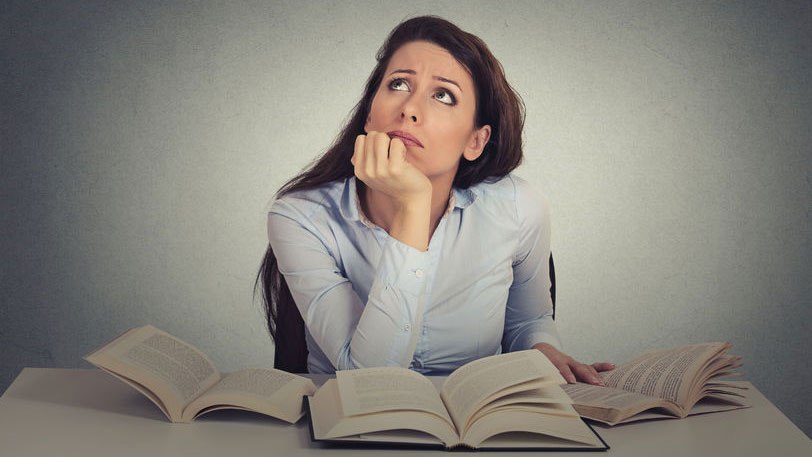

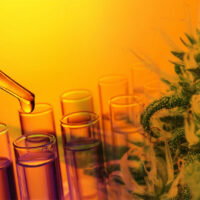

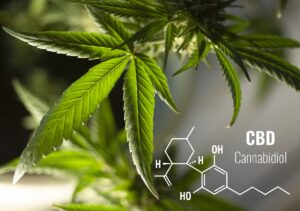
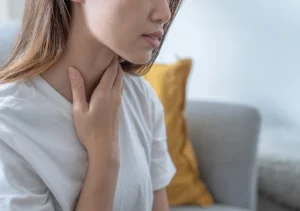
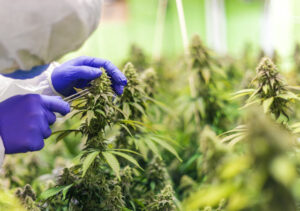
Evelyn Rodriguez November 6, 2017 at 6:49 pm
Great article!!! For years, since my son was 8-9 yrs old, when he was diagnosed with ADHD, it has been a downward situation with meds. He was put on Concerta, then Adderall, then....whatever!!! Long story short, he will be turning 24 and still same frustrations. Stopped meds in his teen yrs and then tried to get back on around age 20. He hates the side effects and somewhere around age of 14-15; w/o my knowledge, started using Marijuana. Apparently, this helps him but I disagree because he can't focus and has trouble learning. It seems to relax him. He gets very frustrated. I believe finding the right strain of medicinal marijuana will benefit him. Thanks...I never give up. Prayers help too!!!
Luka November 8, 2017 at 10:44 am
Prayers always help but I'd also advise you both to focus on finding the right strain. My advice is to start with something close to a 1:1 THC to CBD ratio and then start working towards a Sativa dominant, high THC strain. The trick here is to start off with something neutral and then gradually increase the potency until you find the right combination. When it comes to medical cannabis, it's largely a matter of experimenting to find the right treatment, as we're all unique. Come back in a while to update us on your son's progress! :)
Tanya March 13, 2018 at 10:53 pm
Hi, I'm just asking for some advice, my son has ADHD,ASD,and OCD, it has been challenging, he has Dexamphetamine 5 to 5.5 tables a day, I have to push him to eat, the tables seems to wear off, by the afternoon he is very hypo and don't have much patients, I talk to him with a calm voice it helps sometimes, he is 13 yrs old, I worry about him is future, could anyone please give some advice. please. Thank you very much. Tanya,
jacob noyons April 9, 2018 at 9:17 pm
ive personaly used mariuana recreational but i never felt "stoned'. i try to stay away from it with work but if i need to clear my mind i go for a walk and smoke a joint. from my exprerience hashis (high cbd) makes me focused and i realy want to do something, on the other hand high thc (weed) makes me relaxed and just listen to music not thinking about anything but the here and now. so yea, since just having a clear mind for the evening is such a nice experience i often go out for a walk even in work weeks, it is oout of my system by the time i need to get up for work and just keeping a habbit of showering every day also gets rid of the smell. ive never tryed edibles but since i take both concerta and stretarra i dont want to try anything more without my doctor giving a green light.
Helena Miles April 10, 2018 at 9:49 am
Hi Jacob, Thank you for sharing your story with us. You should always do whatever makes you feel most comfortable. I know our readers will have a lot to learn from your experience.
Lauren September 18, 2018 at 5:15 pm
Hello my son is 10 and was daignosed with adhd last yr i have no problem with him at home becaue hes is where he is comfortable it seems like its worse at school he was presceibed vyvanse and respiridone i have nor given him the respiridone and only let him take the vyvanse although i do not want too the school calls daily and reports that he is in office for driarupting class or not doing his work or had a meltdow i would love to know if there is a doctor in canada preferably alberta or bc since i live in alberta nad have family in bc qho does or would prescribe thia or give me alternative ideas to help my son instead of giving him an emphatmine and antipsychosis when he does not even need it thank you
Luka September 19, 2018 at 3:07 pm
Hey Lauren, There are several cannabis doctors/clinics in Alberta, one is run by Cannabis Clinics Canada and is located in Calgary at 4411 16 Avenue NW Unit 121, phone number: 888-256-7043. You might try giving them a call. Here is their website -- https://www.cannabisclinics.ca/ I personally think your son is too young for anything cannabis-related, unfortunately. These issues is why we need to integrate cannabinoids into mainstream medicine, once the research has advanced enough and the big players give it a green light.
Rebecca April 29, 2020 at 5:54 am
I'm working on getting my Cannabis Coach certification and this website came up in my search for best strains for treating ADHD. I just learned so much just now and I am so grateful to you for writing it and the website owners for making this available to help people. I had no idea what I would suggest since I don't know anyone with ADHD or if I do they cover it well. It's eye opening and I will study it more at length when I am free. Thank you for the learning I just got!